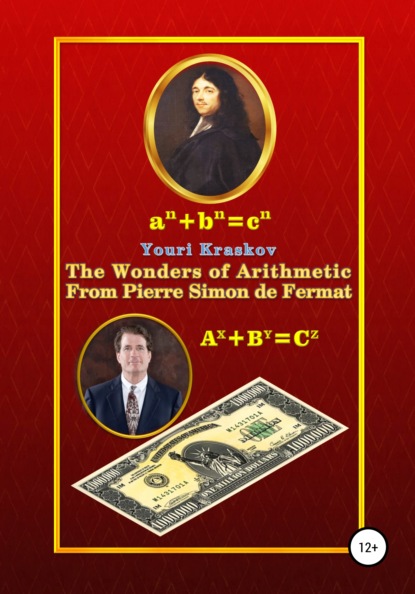По всем вопросам обращайтесь на: info@litportal.ru
(©) 2003-2024.
✖
The Wonders of Arithmetic from Pierre Simon de Fermat
Год написания книги
2021
Настройки чтения
Размер шрифта
Высота строк
Поля
‹
?a› = ‹a› : b
3.6. Key Formula Method
To solve equations with many unknowns in integers, an approach is often used when one more equation is added to the original equation and the solution to the original is sought in a system of two equations. We call this second equation the key formula. Until now due to its simplicity, this method did not stand out from other methods, however we will show here how effective it is and clearly deserves special attention. First of all, we note an important feature of the method, which is that:
Key formula cannot be other as derived from the original equation.
If this feature of the method is not taken into account i.e. add to the original equation some other one, then in this case, instead of solving the original equation we will get only a result indicating the compatibility of these two equations. In particular, we can obtain not all solutions of the original equation, but only those that are limited by the second equation.
In the case when the second equation is derived from the initial one, the result will be exhaustive i.e. either all solutions or insolvability in integers of the original equation. For example, we take equation z
= x
+ y
. To find all its solutions we proceed from the assumption that a prerequisite (key formula) should be z = a
+ b
since the right-hand side of the original equation cannot be obtained otherwise than the product of numbers which are the sum of two squares. This is based on the fact that:
The product of numbers being the sum of two squares in all
cases gives a number also consisting the sum of two squares.
The converse is also true: if it is given a composite number being the sum of two squares then it cannot have prime factors that are not the sum of two squares. This is easily to make sure from the identity
(a
+b
)(c
+d
)=(ac+bd)
+(ad?bc)
=(ac?bd)
+(ad+bc)
Then from (a
+b
)(a
+b
)=(aa+bb)
+(ab?ba)
=(a
?b
)
+(ab+ba)
it follows that the square of a number consisting the sum of two squares, gives not two decompositions into the sum of two squares (as it should be in accordance with the identity), but only one, since (ab?ba)2= 0 what is not a natural number, otherwise any square number after adding to it zero could be formally considered the sum of two squares.
However, this is not the case since there are numbers that cannot be the sum of two squares.
As Pierre Fermat has established, such are all numbers containing at least one prime factor of type 4n ? 1. Now from
a
?b
=c; ab+ba=2ab=d; (a
+b
)
=c
+d
the final solution follows:
z
=(a
+b
)
=(a
+b





